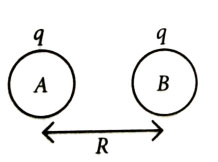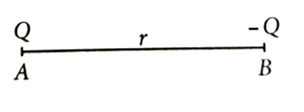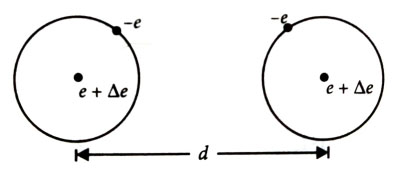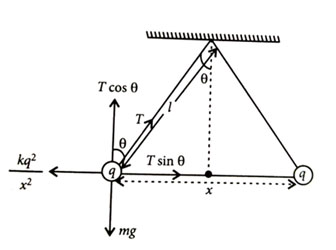Topic Question Set
Q 1
:
Two identical charged conducting spheres A and B have their centres separated by a certain distance. Charge on each sphere is q and the force of repulsion between them is F. A third identical uncharged conducting sphere is brought in contact with sphere A first and then with B and finally removed from both. New force of repulsion between spheres A and B (Radii of A and B are negligible compared to the distance of separation so that for calculating force between them they can be considered as point charges) is best given as: [2025]
(2)
According to Coulomb's law,
By touching an uncharged sphere C with charged sphere A, charge on each sphere A and C becomes .

Now, when charged sphere C is kept in contact with sphere B,
then total charge is,
Then,
Charge on B =
Charge on C =
Now, charge on A is and charge on B is .
So,
Q 2
:
Two point charges A and B, having charges +Q and –Q respectively, are placed at certain distance apart and force acting between them is F. If 25% charge of A is transferred to B, then force between the charges becomes [2019]
(3)

In Case I :
...(i)
In Case II :
...(ii)
From equations (i) and (ii),
Q 3
:
Suppose the charge of a proton and an electron differ slightly. One of them is , the other is . If the net of electrostatic force and gravitational force between two hydrogen atoms placed at a distance (much greater than atomic size) apart is zero, then is of the order of
[Given: mass of hydrogen ] [2017]
C
C
C
C
(2)
A hydrogen atom consists of an electron and a proton.
Since a hydrogen atom carries a net charge
...(i)
will act between two hydrogen atoms.

The gravitational force between two hydrogen atoms is given as ...(ii)
Since the net force on the system is zero,
Using eqns. (i) and (ii), we get
C
Q 4
:
Two identical charged spheres suspended from a common point by two massless strings of lengths , are initially at a distance apart because of their mutual repulsion. The charges begin to leak from both the spheres at a constant rate. As a result, the spheres approach each other with a velocity . Then varies as a function of the distance between the spheres, as [2016]
(1)

From figure, ...(i)
...(ii)
From eqns. (i) and (ii),
Since is small,
Since, ;

